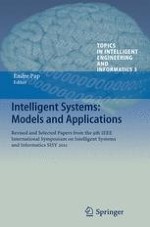The theory and applications of intelligent systems is today an important field of research. This book is an up-to-date collection of seventeen chapters, written by recognized experts in the field. In an introductory mathematical foundations part an overview of generalizations of the integral inequalities for nonadditive integrals and a construction of the General Prioritized Fuzzy Satisfaction Problem is given. Then different aspects of robotics are presented, such as the differences between human beings and robots, the motion of bipedal humanoid robots, and an evaluation of different autonomous quadrotor flight controllers. Also Fuzzy Systems are presented by a model of basic planar imprecise geometric objects allowing various applications in image analysis , GIS, and robotics, as well as a type-2 fuzzy logic in a software library for developing perceptual computers, and a two--degree--of--freedom speed control solutions for a brushless Direct Current motor. The book also presents recent applications in medicine such as a Virtual Doctor System, methods for a face to face human machine interaction, and an emotion estimation, with applications for multiple diseases and the effect of the applied therapy. The last part of the book covers different applications in transportation, network monitoring, and localization of pedestrians in images.
